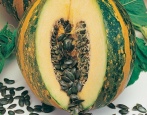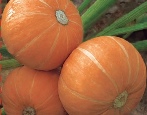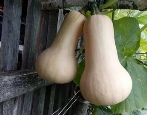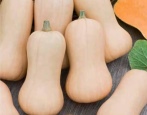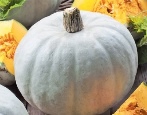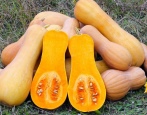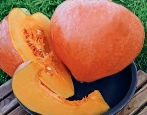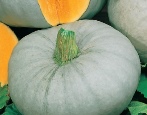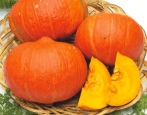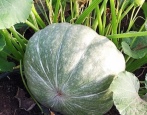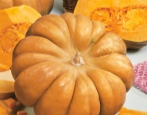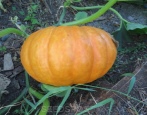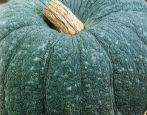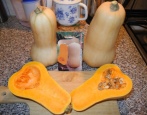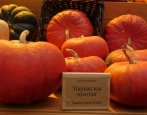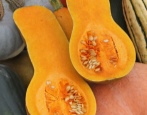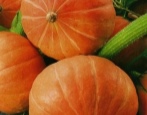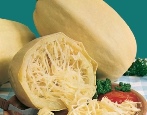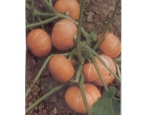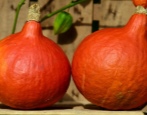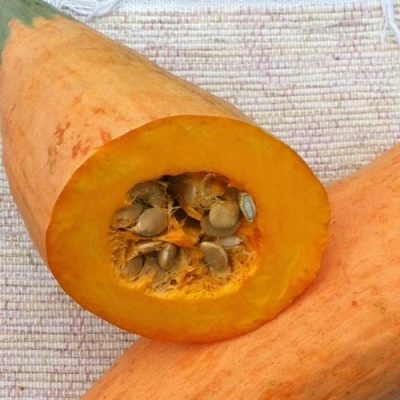
- Authors: America
- Growth type: powerful
- Lash length, m: 2,5-3
- The form: fusiform
- Weight, kg: 5 to 18
- Coloration: pink with longitudinal lightened stripes
- Bark: thin
- Color of the pulp: deep orange
- Pulp thickness, cm: 6-7
- Pulp (consistency): dense
Fans of exotic pumpkin varieties will certainly enjoy the mid-season American-bred Pink Banana. It is famous for its unpretentious agricultural technology, stable productivity, strong immunity and excellent taste. It is easy to grow a culture if you familiarize yourself with the basic rules of planting and care.
Breeding history
Pumpkin Pink banana is a popular variety with a long history, bred by American breeders over 100 years ago. Despite the fact that the variety began to be cultivated in Russia not so long ago, it quickly became popular and beloved among vegetable growers. The most productive variety growing in the Central region.
Description of the variety
Melon culture Pink banana is a powerful and voluminous plant with elongated lashes reaching a length of 2.5-3 meters. The plant has an average thickening of dark green leaves, there are strong whips, a developed root system.
During the flowering period, the plant acquires an incredibly beautiful decorative appearance, since large bright yellow flowers appear on it, pleasantly fragrant. In a favorable environment, a pumpkin bush can occupy an area of up to 5 meters in the garden. The number of fruits on the bushes is different, but experienced vegetable growers recommend forming a pumpkin in 2-3 lashes.
Characteristics of the appearance of plants and fruits
The pink banana represents the category of large-fruited varieties. The culture is characterized by the ripening of specimens of various shapes, lengths, and weights. On average, a pumpkin gains weight from 5 to 18 kg, and grows in length to 100-150 cm. The pumpkin can be fusiform, in the form of an ellipse, elongated-oval, outwardly resembling an elongated marrow with rounded edges. Sometimes you can find curved fruits that resemble a banana.
The color of the fruit is unusual, pinkish, diluted with light blurry stripes. At the stage of technical ripeness, the pumpkin is evenly covered with a pink-yellow color, and the completely ripe fruit acquires a pink color. The surface of the specimens is smooth, without pronounced ribs. The bark is quite thin, as the pumpkin ripens, it becomes corky, gaining strength. The seed nest is located along the entire length of the pumpkin. Seeds are medium-sized, flat.
The harvested crop can be transported over different distances, as well as stored for a long time without loss of taste and marketability. Vegetable storage reaches 5-6 months. Pumpkins stored for 2-3 months acquire an even more pronounced taste.
Purpose and taste
This variety is famous for its excellent taste. The pumpkin pulp of a bright orange color has a fleshy, tender, rather dense and juicy consistency without fiber and voids inside. The fruit has a harmonious taste: pronounced sweetness, fruity notes and a light aroma make the pumpkin very unusual and tasty. In addition, the vegetable pulp contains an increased amount of nutrients, vitamins, trace elements and beta-carotene.
Grown pumpkins are suitable for making cereals, mashed soups, jams, juices, pies, as well as various sweet dishes. In addition, the variety is ideal for eating fresh, as well as for adding to fruit salads, for roasting in the oven. It is worth noting that during heat treatment, the aroma of the vegetable becomes brighter and more appetizing.
Ripening terms
The American pumpkin is blessed with a medium ripening period. From the first shoots to ripe fruits on the ridge, 95-110 days pass. Specimens ripen gradually, therefore, they are collected in several stages.Harvesting takes place at the end of August - mid-September. You need to remove the copies together with the stalk.
Yield
The variety has good productivity indicators. On average, up to 40 kg of fleshy fruits can be harvested from 1 plant.
Growing and care
The vegetable is cultivated in several ways: seed and seedlings. Sowing seeds for seedlings should be in April, and then (late May-early June) the grown bushes with 3-5 true leaves are transferred to a permanent place. Sowing is carried out in peat cups, deepening the seed into the substrate by 3-4 cm. The transplant is carried out very carefully, since fragile roots can be damaged. The distance between the bushes is 100 cm.The optimal planting pattern is 100x150 cm.
Sowing of pre-treated and disinfected seeds in open ground is carried out at the end of May or the first week of June. After sowing, plantings are sheltered, which will protect against possible return frosts, and also accelerate the emergence of seedlings. When sowing, the soil should be warmed up to +12 degrees minimum. The pumpkin is usually planted in ridges where potatoes, legumes or onions were previously grown.
Pumpkin care is standard: regular watering every 4-6 days, fertilizing during flowering and fruit formation (phosphorus-potassium mixtures), loosening the soil, weeding row spacings, forming a plant in 1-2 stems (pinching the central whip), preventing infections. Do not forget about the lashes that need to be untangled or covered with earth. The optimum temperature for plant development is + 25-27 degrees.
Requirements for soil and climatic conditions
Planting pumpkins is carried out in the southern part of the garden, since the vegetable is thermophilic, it feels good in a lighted and warm place, where there is protection from drafts and cold winds in the form of fences or buildings. It is comfortable to grow a crop in light, nutritious, moist and non-acidic soils with a good drainage system. Often these are fertile sandy loam or light loam.
Disease and pest resistance
Pumpkin is highly resistant to many diseases, if you do not violate the rules of agricultural technology. It is extremely rare for a vegetable crop to be attacked by pests: aphids and spider mites. If the care is disturbed, pumpkins can be exposed to powdery mildew and rot.
